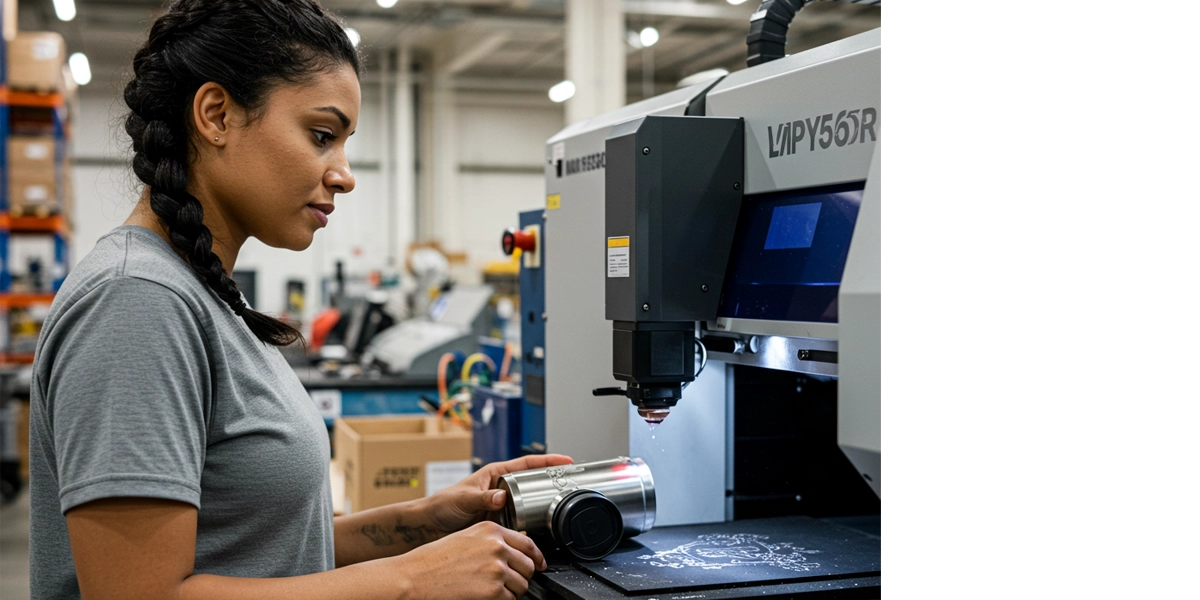In This Article:
Ecommerce brands cannot afford to make mistakes in the picking and packing process of fulfillment of orders. Mistakes can happen when orders are being prepared and items are either chosen incorrectly from the inventory or packed improperly for shipping. They can result in unhappy customers, negative feedback, and lost money.
Picking errors don’t just lead to returns—they impact customer trust, increase operational costs, and reduce profitability. A warehouse with even a 2% error rate could lose thousands in refunds, reshipments, and labor inefficiencies.
Having an effective way of managing your inventory is crucial in preventing these errors. By ensuring you have accurate information about your stock levels and that your warehouse is running smoothly, you can reduce the chances of making mistakes when fulfilling orders.
However, if you have scaled to a point where it makes financial sense to partner with an experienced ecommerce fulfillment company, you should! Logistics companies like One World Direct, who have managed D2C & B2B order fulfillment since 1994, can streamline your operations, increase accuracy, and ultimately make your customers happier.
Leveraging our warehouse management technology, fulfillment centers, and team of experts, you can lower logistics expenses, ship products faster, and start offering product personalization using our proprietary personalized-to-consumer (P2C) fulfillment technology.
Reducing picking errors in a warehouse is crucial for maintaining efficiency, minimizing returns, and improving customer satisfaction. Inaccurate order picking leads to incorrect shipments, frustrated customers, and increased operational costs. This guide covers 5 proven strategies to reduce manual picking errors, streamline warehouse operations, and ensure shipping accuracy.
1. Implement Warehouse Automation Technologies
Warehouse managers are always looking for ways to be more efficient and accurate, especially when it comes to fulfilling ecommerce orders. One solution that is transforming the industry is warehouse automation, which uses advanced technology to reduce errors in the picking and packing process significantly.
How Warehouse Automation Works
Here are some key technologies driving warehouse automation:
1. Autonomous Mobile Robots (AMRs)
AMRs are a game-changer in warehouse automation. These robots can independently navigate through the warehouse to find the right products for each order. By using AMRs, warehouses can:
- Improve efficiency by quickly moving items from one location to another
- Reduce physical strain on employees, minimizing the risk of errors caused by fatigue
- Keep track of inventory in real-time, ensuring accurate order fulfillment
2. Pick-to-Light and Put-to-Light Technology
Pick-to-Light and Put-to-Light systems are designed to make the picking process even more precise. Here’s how they work:
- Light displays guide workers to the exact storage locations where items are kept, showing them the quantity needed for each order
- When an item is picked or put away correctly, there is immediate visual feedback to confirm its accuracy
- These systems can be integrated with warehouse management software, allowing for continuous improvement based on live data collection
The Benefits of Warehouse Automation
By implementing warehouse automation technologies like AMRs and Pick-to-Light systems, businesses can experience several advantages:
- Improved Accuracy: With visual cues and automated guidance, the chances of picking or packing errors are greatly reduced.
- Faster Order Fulfillment: AMRs can swiftly move products from storage areas to packing stations, speeding up the entire process.
- Real-Time Inventory Management: By constantly tracking inventory levels with AMRs and integrating with the WMS, warehouses can ensure stock availability across all sales channels.
- Consistent Customer Experience: With accurate order fulfillment and timely delivery, brands can maintain customer satisfaction and loyalty.
Why Omnichannel Businesses Need Warehouse Automation
For companies that are expanding their presence across multiple sales channels (such as online websites, marketplaces, and dropshipping through major retailers), warehouse automation is crucial for maintaining consistency and meeting customer expectations. Here’s why:
- Inventory Alignment: By using automation to manage inventory, businesses can avoid stockouts or overselling situations that often occur with manual processes.
- Efficient Order Routing: AMRs can be programmed to prioritize certain types of orders based on their urgency or shipping requirements, ensuring timely fulfillment.
- Increased Throughput: Automated solutions like auto-baggers, auto-box machines, and automated sorting systems can significantly boost the speed and volume of orders processed, enabling businesses to handle higher order volumes from multiple channels seamlessly.
Common Warehouse Picking Errors
Efficient order fulfillment relies on accurate picking, but errors can still occur, leading to costly mistakes and dissatisfied customers. Here are the most common warehouse picking errors, their causes, and how they impact operations:
Mis-Picks (Selecting the Wrong Item)
- Error: A worker picks an item that doesn't match the order, often due to misreading labels or incorrect bin placement.
- Impact: The wrong product is shipped, leading to customer complaints, costly returns, and potential damage to brand reputation.
Short Picks (Missing Items in an Order)
- Error: An order is packed with fewer items than required, either due to stock discrepancies or human oversight.
- Impact: Customers receive incomplete shipments, causing frustration, additional shipping costs to correct the mistake, and potential loss of business.
Over Picks (Packing Extra Items by Mistake)
- Error: More items than ordered are picked and packed, often due to manual counting errors or misinterpretation of order details.
- Impact: The company absorbs the cost of extra products and shipping, reducing profit margins and disrupting inventory accuracy.
Wrong SKU Selection (Picking the Right Product but Wrong Variation)
- Error: A picker selects an item that looks similar but has a different size, color, or model number due to unclear labeling or poor warehouse organization.
- Impact: Customers may receive incorrect variations, leading to unnecessary returns and a loss of trust in the brand’s accuracy.
The Role of Technology and Human Oversight
While warehouse automation brings numerous benefits, it’s important to remember the value of human expertise in the process. Technology serves as a tool to support workers and minimize errors, but it cannot replace humans’ critical thinking and problem-solving abilities.
By combining the strengths of both technology and human oversight, businesses can establish a strong foundation for error-free operations and exceptional customer service. However, some tasks are best left to actual people. For your customer service needs, you should opt for call center services handled by US-based agents to handle support through calls, chats, or emails on behalf of your company. 3PLs that integrate their call center with their warehouse network can deliver the optimal experience since agents can access customer data and purchase history to provide superior ecommerce customer service.
2. Optimize Storage Strategies
Proper storage strategies play a crucial role in preventing errors during the picking and packing process. An inefficient or disorganized storage system can easily lead to mispicks, lost items, and increased time spent locating products.
The Importance of Dynamic Storage Strategies
It is best to have a flexible approach towards your storage strategies and regularly review and adjust them based on changing demands. For example, apparel brands often benefit from storing items by size rather than by style. Since customers typically order multiple items in the same size, grouping like sizes together can streamline the picking process and improve efficiency.
The Significance of Item Location
Another factor to consider is the location of frequently picked items. By placing them near packing/shipping areas, you can significantly improve efficiency by reducing the time employees spend moving from one place to another. This logical organization of items enhances workflow while minimizing the chances of error. For example, if there’s a surge in demand for certain items during peak seasons, it makes sense to place these items in easily accessible areas for quick and efficient picking.
The Role of Slotting and Labeling
The proper slotting and labeling of items should never be underestimated. Incorrect labeling or improper placement can cause confusion during the fulfillment process, resulting in wrong orders being shipped out. Therefore, ensuring that every item is accurately slotted and labeled is crucial for maintaining accuracy throughout operations.
The Benefits of Separating Items
It’s also important to separate different items or parts in separate storage bins. Prevent mispicks by ensuring that similar-looking or related items are not mixed up to reduce errors during picking. Using color-coded bins or clear plastic containers can be an effective way to separate small parts or different SKUs (stock-keeping units) of a product line.
The Key Takeaways
- Optimize storage strategies by regularly reviewing and adapting them to changing demands.
- Place frequently picked items near packing/shipping areas for faster and more efficient operations.
- Ensure that every item is correctly slotted and labeled to avoid fulfillment errors.
- Separate different items or parts in distinct storage bins to prevent mix-ups and mispicks.
3. Enhance Identification and Labeling Processes
The precision of identification and labeling processes is crucial for picking and packing. Mistakes at this stage can cause major problems later on, affecting customer satisfaction and profits.
Barcode Scanners
Integrating barcode scanners into the workflow allows for instant item identification and tracking. This technology ensures that:
- Each item is accurately recorded, reducing the chances of shipping the wrong products.
- Real-time inventory tracking is maintained, which helps with inventory management.
- Staff can quickly confirm that they have picked and packed the correct items, making the process more efficient.
Distinct Labeling Techniques
Customizing labeling strategies to suit different package sizes and SKUs ensures that handling instructions are clear. Here are some effective methods:
- Use unique color codes or symbols for different product categories to speed up identification.
- Have consistent label formats for all product lines to maintain uniformity.
- Create labels with high contrast and readability for staff to understand easily.
Incorporating strong identification and labeling systems reduces errors and streamlines the entire fulfillment process. It’s a worthwhile investment in technology that brings about improved operational accuracy.
 By making sure that each product has a clear label, team members can quickly determine the right way to handle each order. This detailed labeling helps prevent confusion during sorting and shipping, resulting in fewer issues with incorrect orders.
By making sure that each product has a clear label, team members can quickly determine the right way to handle each order. This detailed labeling helps prevent confusion during sorting and shipping, resulting in fewer issues with incorrect orders.
Providing your team with reliable tools like barcode scanners and establishing specific labeling procedures shows your commitment to accuracy in every aspect of your operations. As you fine-tune these systems, remember that their effectiveness depends on ongoing training and adherence to best practices among your workforce.
4. Conduct Regular Inventory Checks
Data integrity is the backbone of efficient ecommerce fulfillment operations. You must trust that your inventory figures are accurate to meet customer expectations and maintain optimal stock levels. Regular inventory checks are pivotal in ensuring this accuracy, enabling you to correct discrepancies before they escalate into larger issues.
The Critical Nature of Data Accuracy
- Maintains a reliable database: With up-to-date inventory data, decision-makers can access precise information for forecasting, reducing overstock and stockouts.
- Enhances order fulfillment: Accurate inventory levels mean orders are fulfilled correctly, leading to increased customer satisfaction.
Identifying Misplaced Items
- Reduces error rates: Inventory checks help locate items that have been misplaced, which can then be returned to their correct positions, thereby preventing picking errors.
- Timely corrections: By catching these errors early, you can make adjustments before they impact customers, ultimately safeguarding your brand's reputation.
Replenishment and Planning
- Informs replenishment schedules: Insight from regular checks informs your replenishment process, ensuring high-demand items are always in stock.
- Refines inventory planning: Analyzing check results leads to better demand forecasting and more strategic inventory planning.
How to Prevent Picking Errors with Quality Control
To prevent picking errors, warehouses must implement strict quality control measures:
- Double-Check Orders Before Shipping – A secondary scan ensures accuracy.
- Random Order Audits – Catch errors before they impact customers.
- Employee Performance Tracking – Identify patterns of frequent errors and provide corrective training.
You gain control over your stock levels by integrating regular inventory checks into your warehouse management routine. This proactive approach allows for the timely identification of misplaced items, which is essential in maintaining a streamlined replenishment process and robust inventory planning. As you fine-tune these processes based on routine inventory checks, you’ll observe noticeable improvements in order accuracy and customer satisfaction.
Knowing how important regular inventory audits are for your operations’ health, let’s explore how establishing accountability measures can further strengthen your efforts to reduce errors.
5. Establish Accountability Measures
Establishing accountability measures is essential to reducing picking and packing errors in your warehouse operations. These measures not only help you track and manage problems but also foster a culture of responsibility among your warehouse associates.
One effective way to implement this is by assigning unique associate IDs. This method allows you to monitor each associate’s performance in real-time, helping you identify the source of any recurring errors. You can address issues promptly by tracking these IDs, and providing immediate feedback or training where necessary.
Improving Error Tracking and Responsibility
Assigning associate IDs is not just about identifying problem areas; it’s about creating a sense of ownership and responsibility. When associates know their work is being monitored, they are more likely to be conscientious in their tasks, leading to fewer mistakes.
This approach also encourages transparency within your warehouse operations. It makes it clear that everyone has a role to play in maintaining high standards of accuracy – and that everyone’s efforts are recognized and valued.
Using IDs for Training Assessment and Performance Improvement
Associate IDs are useful not only for error tracking but also as a tool for training assessment and performance improvement. By analyzing the data associated with each ID, you can gain insights into individual strengths and weaknesses.
 For instance, if an associate consistently struggles with certain tasks, targeted training sessions can be arranged to improve their skills in those areas. Conversely, if an associate excels in specific tasks, they could potentially be assigned more responsibility in those areas – optimizing your workforce by focusing on what each member does best.
For instance, if an associate consistently struggles with certain tasks, targeted training sessions can be arranged to improve their skills in those areas. Conversely, if an associate excels in specific tasks, they could potentially be assigned more responsibility in those areas – optimizing your workforce by focusing on what each member does best.
Robust accountability measures can motivate associates. With clear tracking of their performance, they can see their progress over time and strive to improve. Regular feedback based on this data can help them understand how their work directly impacts the overall efficiency of your ecommerce fulfillment operations.
Other Advanced Techniques to Consider
Beyond the fundamental strategies for error reduction, incorporating advanced techniques can further enhance picking and packing accuracy. These sophisticated methods leverage technology and optimized processes tailored to diverse operational scenarios:
Zone Picking
- Efficient Resource Allocation: Assign pickers to specific zones within the warehouse, minimizing travel time and improving focus on select inventory.
- Specialized Expertise Development: Enables staff to become proficient with the products in their zone, reducing error rates.
- Simultaneous Order Fulfillment: Pick multiple orders in a single pass through the warehouse.
- Time-Saving Potential: Ideal for orders sharing common items, cutting down on repetitive trips.
Wave Picking
- Scheduled Order Processing: Combines elements of both zone and batch picking, organizing order fulfillment in waves throughout the day.
- Strategic Synchronization: Aligns picking with shipment schedules and labor shifts for maximum efficiency.
Indoor Navigation Systems and Asset Tracking Technologies
- Precise Item Location: Guides pickers through optimal routes using RFIDs and IoT devices.
- Real-Time Inventory Visibility: Tracks assets constantly, ensuring stock levels are accurate and items are easy to find.
Barcode Technology
- Automated Labeling Consistency: Guarantees correct labeling through barcode scanners that reduce human error.
- Seamless Integration: Works with existing databases to maintain up-to-date tracking information for every item.
Mobile Robots
- Augmented Workforce Capabilities: Assist human workers by transporting goods between locations, enabling them to focus on more complex tasks.
- Continuous Operation Advantage: Operates around the clock without fatigue, maintaining consistent productivity levels.
- Centralized Data Hub: Provides a single source of truth for inventory management.
- Error Reduction Features: Includes tools like real-time inventory updates and order verification protocols.
Optimizing Warehouse Layout
- Streamlined Pick Paths: Designs warehouse space for minimal movement, making picking faster and less prone to mistakes.
- Travel Time Reduction: Arrange items based on frequency and sequence of picks to shorten picker routes.
Reducing Shipping Errors for Better Customer Satisfaction
Picking mistakes don’t just happen in the warehouse—they carry over to the shipping process. Here’s how to reduce shipping errors:
- Standardized Packaging & Labeling – Ensures the right items go to the right customers.
- Automated Address Verification – Prevents misdelivered packages.
- Real-Time Order Tracking – Helps detect issues before they become costly.
Employing these advanced techniques creates a resilient framework that supports accuracy while keeping pace with evolving ecommerce demands. As warehouses embrace these innovations, they position themselves not only to minimize errors but also to scale operations effectively.
Focus on What You Do Best and We'll Focus on What We Do Best: Ecommerce Fulfillment!
Accuracy is crucial in the picking and packing process to keep customers happy and protect revenue. Mistakes in these areas can result in unhappy customers, bad reviews, and lower sales. At OWD, we maintain an accuracy rate of 99.7% across all warehouse departments, ensuring your orders are fulfilled with precision.
If you are ready to let the experts handle your ecommerce logistics, book a consultation with one of our fulfillment specialists. We offer comprehensive fulfillment services and call center services to deliver the best fulfillment experience for your customers.
Ship faster and cheaper and use our advanced tech stack, fulfillment network, and team to handle the storage, picking, and shipping of all your orders with industry-leading accuracy.
In This Article:
Subscribe to our Newsletter
Tincidunt urna mauris eu quam vulputate lobortis sit. Purus feugiat arcu nunc quisque massa ut.



























